Key Points:
- Stalk rot diseases are developing in some fields
- Producers should use the push or pinch test in high risk fields to determine their risk for lodging
- Use the push or pinch test to determine harvest priority
Corn fields are turning quickly. Patches of plants are dying early and/or becoming discolored. In some areas of the state, lodging has been reported. Corn plants prioritize making and filling grain. Consequently, plants will cannibalize their own stalk tissue if necessary in order to have the carbohydrates needed to fill grain.
What does this mean? When plants are stressed and leaf area is reduced by drought, disease, and/or mechanical damage such as that caused by hail or wind, the plant will begin taking resources from within itself. This year, over half of the state is in a drought and some fields have been hit hard by leaf diseases such as southern rust which damages the leaf’s ability to retain water as it causes rips in the leaf surface. The loss of leaf area reduces the plant’s photosynthetic machinery which produces carbohydrates. The plant will then begin to cannibalize carbohydrates from the stalk causing the stalk to weaken. Poor stalk quality can cause stalk lodging and breakage, leading to harvest difficulties. This could cause yield loss and create issues of volunteer corn for next year's crops due to ears lost from lodged corn.
It is critical to scout fields to determine which ones might need to be harvested first or earlier to avoid losses due to lodged corn, especially since conditions for stalk rot diseases have been favorable these past few weeks.
A push or pinch test can be used to determine the incidence of stalk rot/weakness within your own field. This can be done by walking through the field and randomly selecting a minimum of 100 plants, push the plant tops away from you approximately 30 degrees from vertical. Alternatively, you can use a pinch test where you pinch or squeeze the internodes of the lower stalk between your thumb and first finger. If the plants do not snap back to vertical when released or the stalk is crushed when pinched, the stalk may have been compromised by a stalk rot disease. If more than 10% of plants exhibit stalk rot symptoms, it is recommended to harvest affected fields first to reduce the chance of plants lodging prior to harvest. When an infected stalk is split horizontally it will appear discolored and hollow as the pith rots away, leaving the vascular bundles strands loose.
Stalk Rot
Almost every field in Nebraska has stalk rot diseases to some extent. The pathogens causing stalk rot diseases are considered to be opportunistic, meaning they primarily infect injured, stressed, or dead/dying plants. In Nebraska there are several fungi that can cause stalk rot diseases in stressed plants.
The first visible sign of a stalk rot disease is leaves may become discolored, turning brown or gray prior to senescence. When an infected stalk is split horizontally, the decay causes discoloration of the inner pith tissues. The pith or fleshy part of the inside of the stem will pull away from the stalk rind leaving a weakened hollow tube with loose vascular bundle strands.
Anthracnose stalk rot (Colletotrichum graminicola) causes shiny black splotchy lesions visible on the outer stalk in advanced stages of the disease. This pathogen can also cause a top dieback that occurs in nodes above the ear (Figure 1).
Fusarium stalk rot (Fusarium verticillioides) may cause brown streaking on the outside of stalks. It is common to see discoloration inside the stalk varying from white, salmon, to light pink. Crown rot can develop inside the lower stalk below the soil line (Figure 2).
Gibberella stalk rot (Fusarium graminearum) is one of the most common stalk rots in the Corn Belt and can cause dark streaks on the lower internodes of the stalks. Visible black reproductive structures can be scratched off. When the stalk is split this pathogen will cause dark pink to red discoloration inside the stalk.
Charcoal rot (Macrophomina phaseolina) is more common during drought conditions and therefore is more likely to affect corn in pivot corners or dryland fields. Copious amounts of tiny black, round structures are formed inside the stalk, giving it a gray to black appearance, like charcoal dust (Figure 3).
Physoderma brown spot (Physoderma maydis) does not cause a true stalk rot, fungal spores accumulate and infect at nodes. This weakens the nodes causing them to become brittle and snap when pushed (Figure 4). More commonly seen is the yellow to brown lesions on the leaf blades and black lesions on the midrib and leaf sheath. Infection usually occurs earlier in the season V3-V8. Severity of the disease on leaves and stalks are often unrelated. Hybrids vary in their sensitivity to both the leaf disease and node rot.
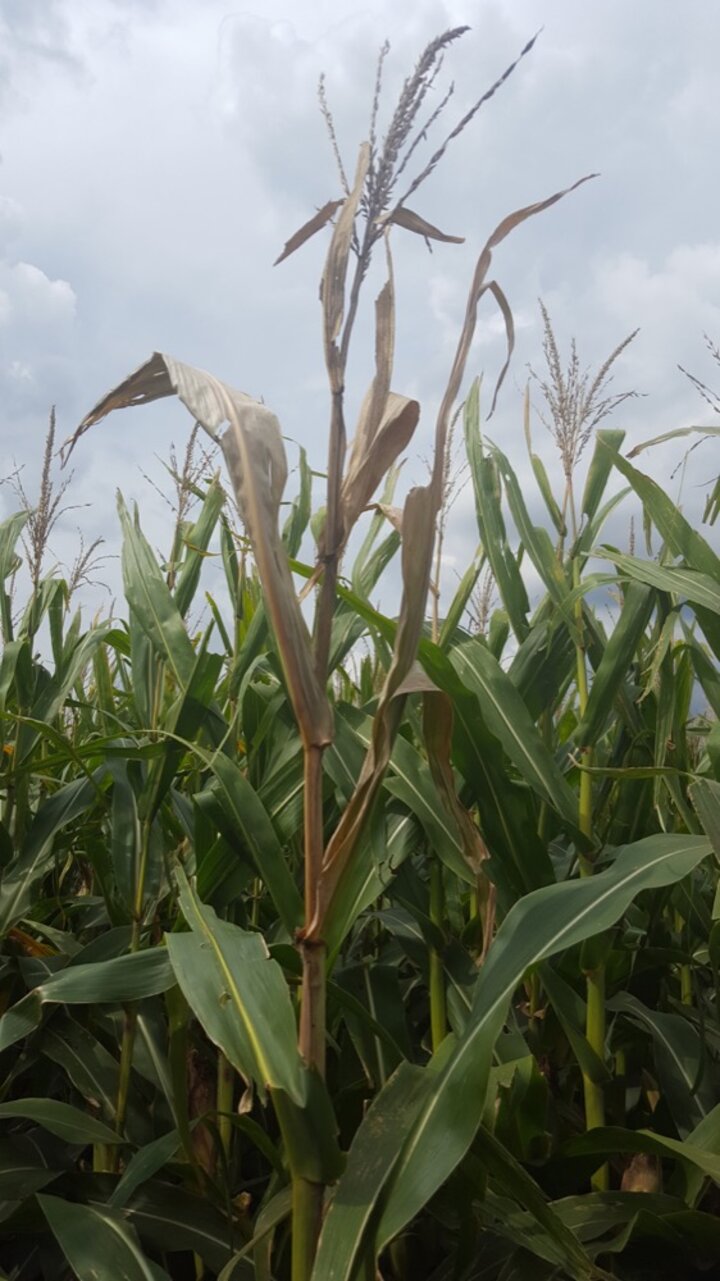

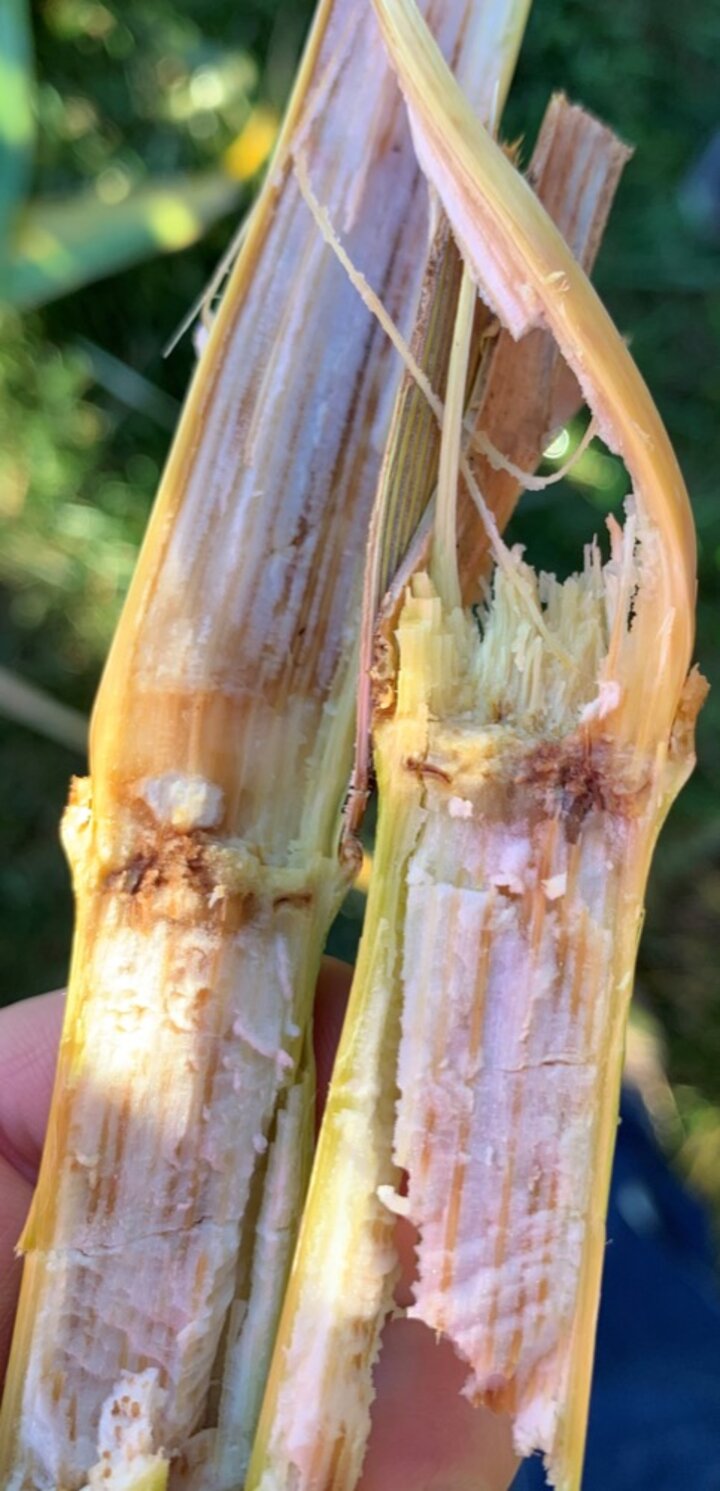
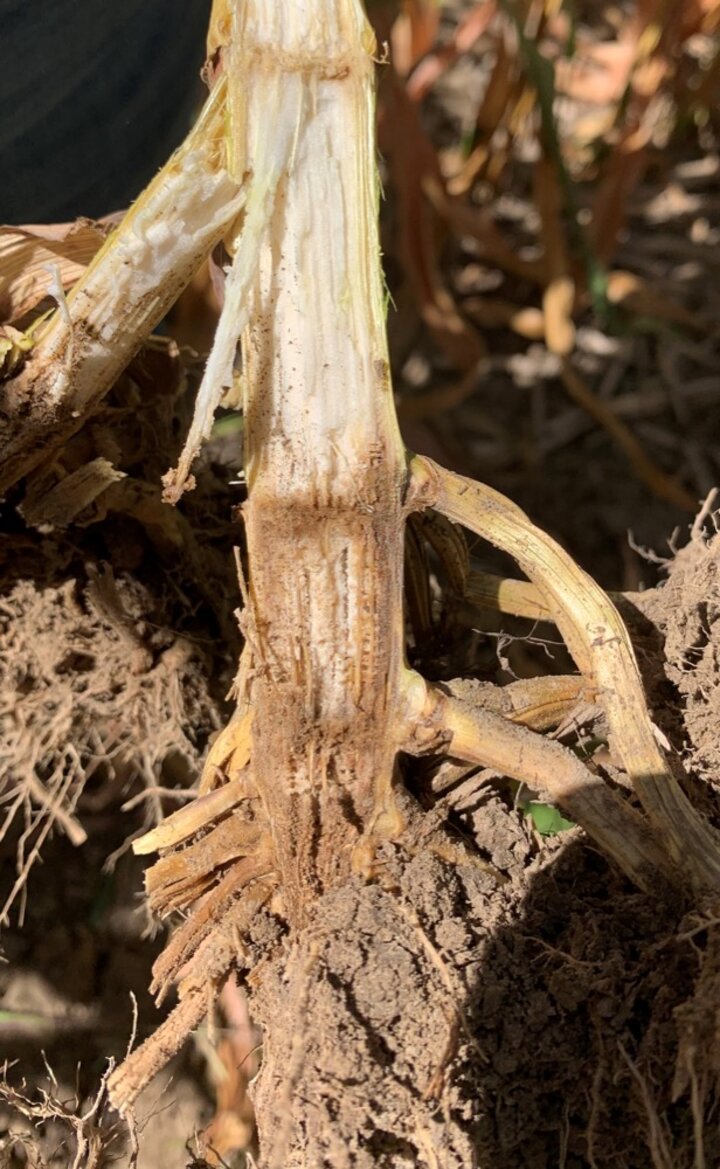
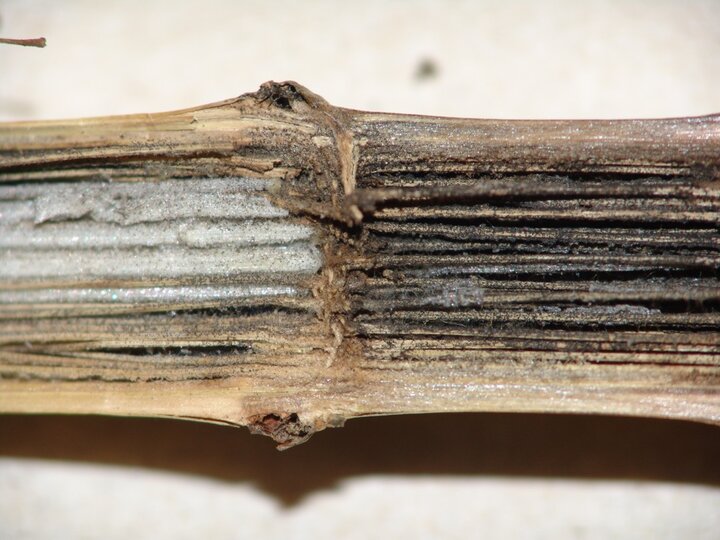
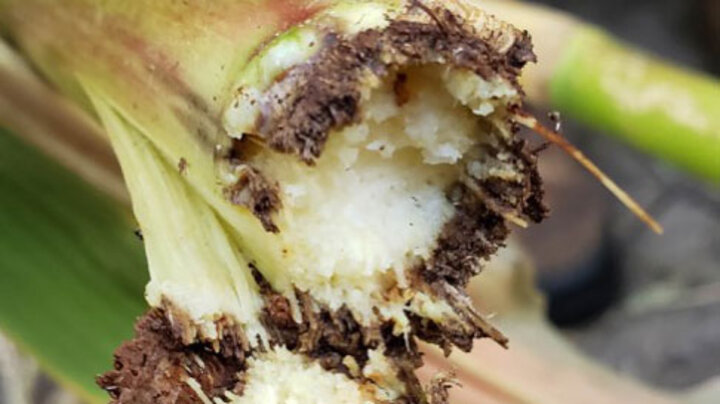
At this point in the season nothing can be done to stop stalk rot, the affected stalks will continue to degrade and weaken over time. By identifying which fields have the highest percent of stalk rot and adjusting harvesting plans you can work to minimize your losses. For fields with chronic stalk rot issues, it might be useful to visit with your seed company rep about their current hybrid ratings for stalk rot diseases.
Sample Submission
If submitting suspected stalk rots to the UNL Plant and Pest Diagnostic Clinic, include stalks and crowns. The foliar top dieback that occurs with some diseases is a response to infection and the pathogen cannot be found in foliar tissue. Information on submitting quality samples can be found on the PPDC website.
Additional Resources
Common Stalk Rot Diseases of Corn (Extension Publication EC1898)
